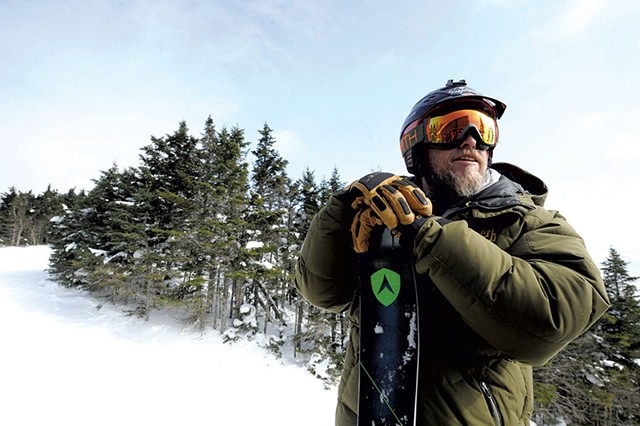
- File: Jeb Wallace-Brodeur
- John Egan
In the last four decades, extreme skier John Egan earned international acclaim for descending some of the world's gnarliest peaks, many of which had never been skied before. Egan didn't make it look easy, but he definitely made it look fun, which helps explain why he starred in 17 movies by the late ski and snowboard filmmaker Warren Miller.
Egan's most famous descent was caught on film for Miller's 1990 release, Extreme Winter. It opens with Egan and his younger brother Dan carving turns down a near-vertical slope at Grand Targhee Resort in Alta, Wyo. Without warning, a cornice the size of a three-story building broke loose and slid 1,000 feet down the mountain.
Egan, who was right behind his brother when Dan tripped the avalanche, turned midair and narrowly escaped, and both skiers made it down the mountain unscathed. The "cornice break" remains one of the most-viewed clips ever for Warren Miller Entertainment.
In a skiing career that's taken him to every continent but Africa, Egan has survived other brushes with death, including a 1989 avalanche that broke three of his ribs. But his most unexpected fall occurred last year on his home turf of Sugarbush Resort in Warren. In September 2020, the new president and chief operating officer, John Hammond, summoned Egan to his office and informed him that his position as chief recreational officer had been eliminated and that his services were no longer needed.
"I was shocked," said Egan, who, after working there for 47 years, was cut loose without notice or a severance package. "Every single owner of Sugarbush felt [that] I was an integral part of the team and trusted me enough to represent them [and] sent me all over the world with Sugarbush on my jacket ... It's ridiculous."
Egan's termination roiled the ski community in the Mad River Valley and beyond. Many longtime Sugarbush guests and staff believed that the decision made by the new owner — Alterra Mountain Company of Denver, Colo., which owns 14 other resorts, including Stratton Mountain in Vermont — was another example of corporate indifference to local ski culture.
But that explanation may be overly simplistic. Egan's dismissal came in the midst of a global pandemic that decimated winter sports revenues in 2020. Some who know Egan and Hammond said that there's been bad blood between them for years and that the move was more about egos, jealousy and differences in leadership styles.
Regardless of the reason, Egan's firing has led many longtime Sugarbush skiers and riders to reconsider whether they'll buy Alterra's season passes this winter. Many Sugarbush employees resigned in protest, including veteran lift mechanics and most instructors in the resort's elite ski programs.
In October 2020, Andover, Mass., resident Nicole Downer, a longtime Sugarbush guest and condo owner, started a change.org petition calling on Alterra to reinstate Egan. The petition garnered more than 3,600 signatures and more than 111,000 page views.
Why such loyalty to Egan? Many describe him as more than just a world-class skier, local celebrity and brand ambassador. David Provost of Burlington, who worked as CEO of winter sports company Dynastar in the 1990s, echoed the sentiments of others who had signed the petition when he wrote that Egan was "the heart and soul of Sugarbush" and that Alterra should reconsider his dismissal.
"He brought a lot of media attention, clout and cachet to the mountain," said Downer. "To just cut him like that really repulsed me."
"John was not only just a really athletic skier," said Winthrop "Win" Smith Jr., who owned Sugarbush from September 2001 until its sale to Alterra in January 2020. "He just had a lot of charisma and could motivate people to ski, whether they were beginners or experts. And he was a lot of fun to be around."
Smith, who served as interim president of Sugarbush for nine months after its sale, denied rumors that he had a hand in Egan's termination.
Blue-Collar Hero
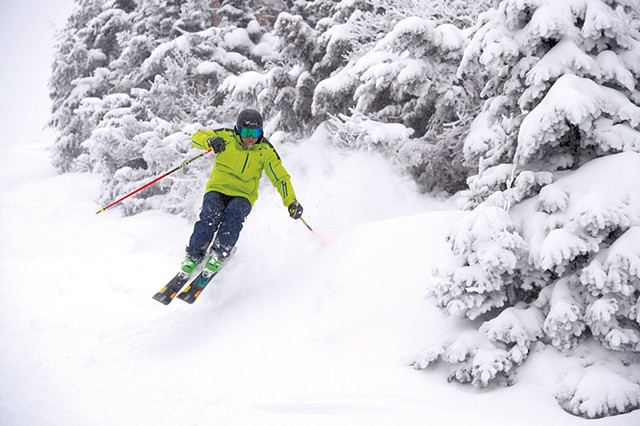
- File: Jeb Wallace-Brodeur
- John Egan
Egan is currently recovering from ankle-replacement surgery to fix an injury he suffered four years ago while taping a TV show at Sugarbush. Still on crutches, he arrived at a recent interview in jeans, a baggy sweatshirt and a baseball cap with his bushy, shoulder-length hair exploding out the sides. He also sported his signature pointy beard and broad grin.
To many people, the 63-year-old still epitomizes the blue-collar, ski-bum ethos that flies in the face of chichi mountain resort culture. Born and raised in South Boston, Egan was one of eight siblings in a working-class Irish family. His parents wouldn't take the kids to a ski mountain until they could stay up on skis without falling, he explained. So the Egan brothers taught themselves to ski by jumping off the family's patio furniture and sliding down snowplowed piles at a neighborhood gas station.
After high school, Egan drove tractor trailers and worked in construction before moving to the Mad River Valley in 1976. At Sugarbush, he started at the bottom, washing dishes and shoveling snow at the Golden Horse Lodge on the Sugarbush Access Road.
"Someone told me that if you want to be the best skier in the world, this is where the best skiers in the world hang out," he said.
Years later, when Egan became a vice president, if the dishwashers or lift mechanics had an issue with management, they'd come talk to him.
"People who did those jobs didn't think I was some executive who went to Harvard and never got my hands dirty," he said.
In the 1970s, Egan could have pursued an Olympic career; for years, he competed in gate races and mogul competitions on the national pro circuits. But that culture, with its cliques, resentments and internal rivalries, didn't appeal to him. "It wasn't an inclusive feeling," he said. To Egan, skiing was first and foremost about having fun.
In 1978, Miller spotted Egan on the slopes of Sugarbush and invited him to be in one of his films. Egan's career changed virtually overnight.
"I was like, OK! This is skiing!" he recalled. "It didn't matter if you fell or you had a great run. You were cheering on your buddy who had a great run and was getting filmed. It changed my whole perspective."
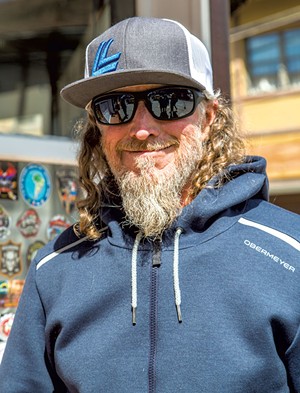
- Courtesy Of Jen Bennett
- John Egan
Indeed, with Miller's crew he found a sense of camaraderie. On the road, Egan was pushing the limits on some of the world's biggest mountains with some of the world's best skiers and snowboarders. But unlike on the racing circuits, he explained, everyone performed better when they reveled in each others' accomplishments.
"Why do orchestras make such beautiful music together with so many individuals?" he asked. "How can a jazz group go off on a tangent and sound like they practiced that? The group can get in the zone, and the group can do better than any one musician can individually."
Throughout the 1970s and '80s, Egan wore the Sugarbush name proudly on his jacket wherever he skied, and people came to Vermont to check out his haunt. He recalled skiing on an especially nasty day when the mountain was virtually deserted. He encountered two men from New Zealand who told him that, years earlier, they'd seen a Warren Miller movie and dreamed of skiing where John Egan skied. Neither one recognized him.
Egan introduced himself, then skied with the Kiwis for the rest of the afternoon. It made their day, and his.
"All the other owners understood the free publicity," Egan said. At Warren Miller film screenings, he explained, "I got up in front of 5,000 to 10,000 people a night, five nights a week, from New York to Maine, for 18 years, to sign autographs and meet kids and grandkids. I had a connection with those people and brought them to Sugarbush."
And Egan never stopped being a ski bum. When his ski season was over, he'd return to the Mad River Valley to build houses — he even built one for Middlebury native Hammond, he said. It wasn't until Smith bought Sugarbush in 2001 that Egan landed full-time employment and started revamping its ski school.
In the early 2000s, he started a program called Adventure Blazers, which pushed against the usual methods of instruction. Having taught himself to ski by jumping off stumps, boulders and patio furniture, Egan thought it was ridiculous for students to learn on flat, obstacle-free surfaces.
He also started bringing more accomplished skiers into the backcountry, which the resort previously considered off-limits. His outlaw approach ruffled feathers, especially among ski patrollers and the Professional Ski Instructors of America. None of Egan's instructors was PSIA certified, he said, though all were world-class athletes.
Egan's approach also attracted hard-core skiers to what they called "the Bush," many of whom invested in real estate there and made it their home.
If Egan Skis It...
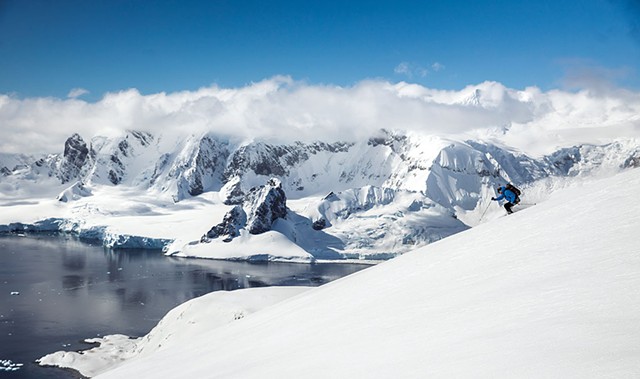
- Courtesy Of Tyler Wilkinson-Ray
- John Egan skiing in Antarctica in November 2018
Bob Bell and his family and friends didn't buy property near Sugarbush just because Egan was there, but that was a big part of the decision. As Bell put it, "If it's good enough for John Egan, it's plenty good enough for me."
Bell, 75, is a semiretired attorney who splits his time between East Warren and Melrose, Mass. Before discovering the Mad River Valley in the mid-1990s, Bell was "a nomad" who hopped from one resort to another throughout New England. But after reading an article in Ski magazine about Egan's X-Team ski clinics, he gave Sugarbush a try.
Soon, Bell and his family were following Egan wherever he held his clinics: Crested Butte, Colo.; Chamonix, France; Tahoe, Calif; Chile. But no matter how far he traveled, Bell always returned to Sugarbush.
"What John and the X-Team touted was that they could raise our freak-out level — and they did," Bell said, likening it to a golf enthusiast attending a fantasy camp with Tiger Woods. "You skied things under their guidance that you wouldn't have dared to do on your own, and you felt comfortable doing it."
With Egan's help, Bell formed an elite skiing program called the Bush Pilots, which catered to the most advanced athletes on the mountain who wanted to break through to the next level. It wasn't a hard sell for Smith, and since its inception more than a decade ago the program has always had a waiting list.
Egan didn't just attract adult skiers. Downer, who started the change.org petition, owns a condo at Sugarbush and skis there all winter with her husband, their four daughters and five other families.
"I gotta say, John was a huge part of making that happen," she said.
Three of Downer's daughters went through Egan's Ski Mountaineers program. The youth version of the Bush Pilots, it teaches kids how to ski safely and confidently in the backcountry. But after Egan got fired, most of the Ski Mountaineers instructors quit in protest.
"John built that sense of community. The Ski Mountaineer[s] program, the quality of the instruction ... were the reasons we bought property there and why we stayed," Downer added. "I think there's hope for Alterra. I just think they gave too much power to the wrong person."
In Bell's opinion, the income alone that Egan generated should have been reason enough to keep him on staff.
"Between the Bush Pilots and the Ski Mountaineer[s] programs, we're talking many hundreds of thousands of dollars going into the mountain each year," Bell said. "And all of that has gone poof."
Many believe that young skiers will miss Egan the most. Dan Schillhammer, who's been at Sugarbush for 12 years, including the last six as a Ski Mountaineers coach, said he's returning this winter for his students despite his "significant disappointment" in the decision to can Egan.
"I do believe it was a failure of Alterra to not appreciate that he was much more than a living legend and skiing icon," he said.
Schillhammer recounted an experience from six years ago, when he had skinned up the mountain with some adventurous 9-year-olds who suddenly spotted a daredevil skier "making turns only Egan could make."
Normally, Egan never rested on the slopes, Schillhammer said. However, when he saw the kids in their backpacks, he stopped to compliment them for hoofing it up the mountain, then high-fived and pole-tapped each one of them.
"I can assure you, despite all the years gone by, every single one of those kids will remember that day and the way [Egan] looked at them," Schillhammer said. "The impression he left on a lot of the coaches, and kids like myself, were lifelong lessons."
Both Alterra and Sugarbush declined interview requests. But in a written statement, Hammond described the decision to terminate Egan's position as strictly business.
"Unfortunately, as we evaluated what programming we would be able to offer heading into the 2020/21 winter season, a lot of his responsibilities as chief recreational officer were going to be limited by the COVID restrictions we faced under state operational guidelines," Hammond said. "That led us to the very difficult decision of eliminating that position, at which point we then tried to work with John to create a new position that fit within our business structure. He chose not to pursue that opportunity."
Egan acknowledged that Hammond had made him that offer but expressed bewilderment at what it meant.
"What did he expect me to do, shovel snow or run the lifts?" he asked. At the time of Egan's termination, his wife was battling an infection on her foot, which later required part of her toe to be amputated. According to Egan, he called Hammond to ask whether his insurance would cover it but was told, "I've got nothing for you."
"I don't want to come off as a disgruntled employee, but I'm bummed and hurt," he said. "It was obvious to me that I wasn't really welcome there."
Egan didn't discuss the specifics of his conflict with Hammond — he emphasized that he's not trying to torpedo him or Alterra — but he alluded to their fundamentally different philosophies on how to treat employees.
"We run a recreation business, and people come [to work] here to ski, with the dream that they, too, can rise to be a vice president," Egan said. "Why do we kill that? This is not a factory. These people didn't go work for Amazon. They're here because they want to be outside. Make it fun for them!"
Statement from John Hammond, president and chief operating officer of Sugarbush Resort
"Sugarbush Resort acted as John Egan’s training grounds for years, enabling him to conquer some of the world’s toughest terrain. He will always remain an important part of our history and icon in the industry. Unfortunately, as we evaluated what programming we would be able to offer heading into the 2020/21 winter season, a lot of his responsibilities as Chief Recreational Officer were going to be limited by the COVID restrictions we faced under state operational guidelines. That led us to the very difficult decision of eliminating that position, at which point we then tried to work with John to create a new position that fit within our business structure. He chose not to pursue that opportunity. We shared many amazing adventures with John over the years and wish him the absolute best in his new endeavors. We will always welcome reforging a new relationship with him in the future."
Correction: November 10, 2021: An earlier version of this story incorrectly identified which Vermont resorts are owned by Alterra Mountain Company. They are Stratton and Sugarbush.
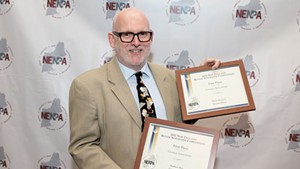










Comments
Comments are closed.
From 2014-2020, Seven Days allowed readers to comment on all stories posted on our website. While we've appreciated the suggestions and insights, right now Seven Days is prioritizing our core mission — producing high-quality, responsible local journalism — over moderating online debates between readers.
To criticize, correct or praise our reporting, please send us a letter to the editor or send us a tip. We’ll check it out and report the results.
Online comments may return when we have better tech tools for managing them. Thanks for reading.